Micron M600 (128GB, 256GB & 1TB) SSD Review
by Kristian Vättö on September 29, 2014 8:00 AM ESTRandom Read/Write Speed
The four corners of SSD performance are as follows: random read, random write, sequential read and sequential write speed. Random accesses are generally small in size, while sequential accesses tend to be larger and thus we have the four Iometer tests we use in all of our reviews.
Our first test writes 4KB in a completely random pattern over an 8GB space of the drive to simulate the sort of random access that you'd see on an OS drive (even this is more stressful than a normal desktop user would see). We perform three concurrent IOs and run the test for 3 minutes. The results reported are in average MB/s over the entire time.
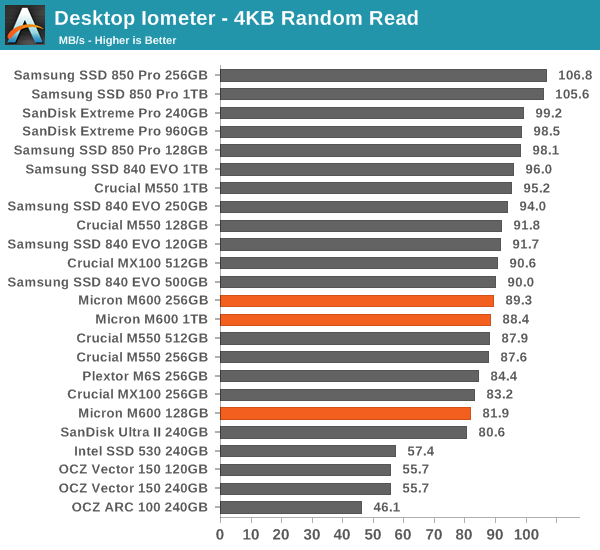
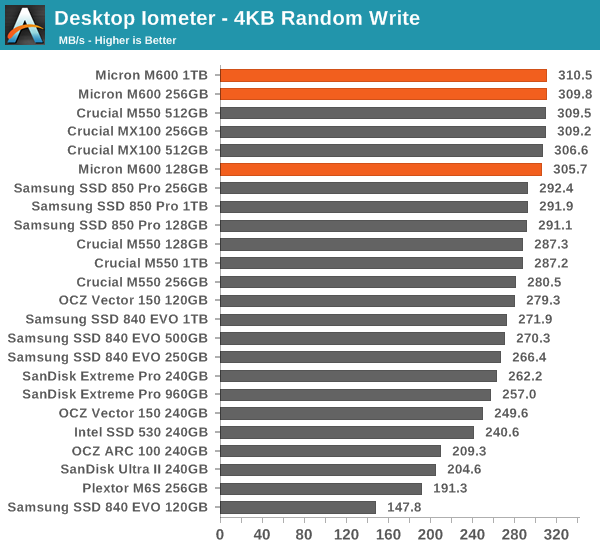
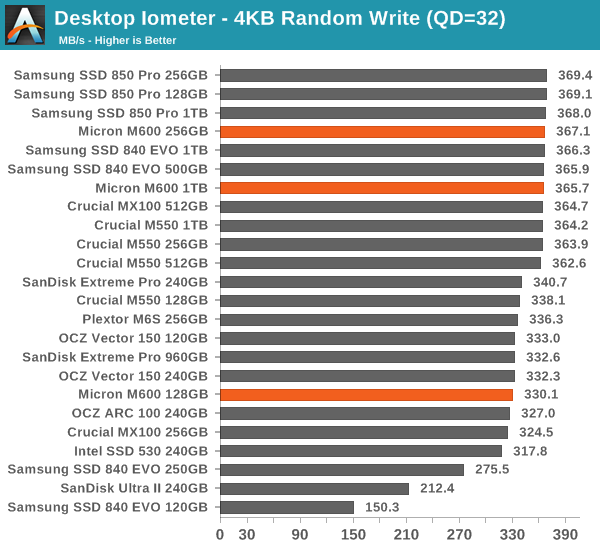
Random performance remains more or less unchanged from the MX100 and M550. Micron has always done well in random performance as long as the IOs are of bursty nature, but Micron's performance consistency under sustained workloads has never been top notch.
Sequential Read/Write Speed
To measure sequential performance we run a 1 minute long 128KB sequential test over the entire span of the drive at a queue depth of 1. The results reported are in average MB/s over the entire test length.
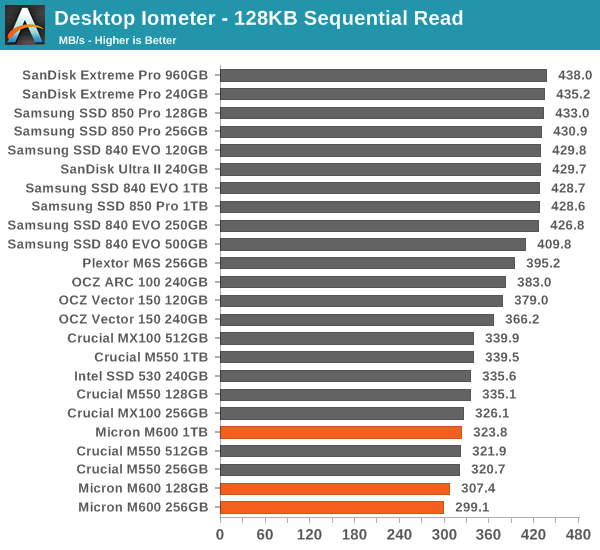
Sequential write performance sees a minor increase at smaller capacities thanks to Dynamic Write Acceleration, but aside from that there is nothing surprising in sequential performance.

AS-SSD Incompressible Sequential Read/Write Performance
The AS-SSD sequential benchmark uses incompressible data for all of its transfers. The result is a pretty big reduction in sequential write speed on SandForce based controllers, but most other controllers are unaffected.

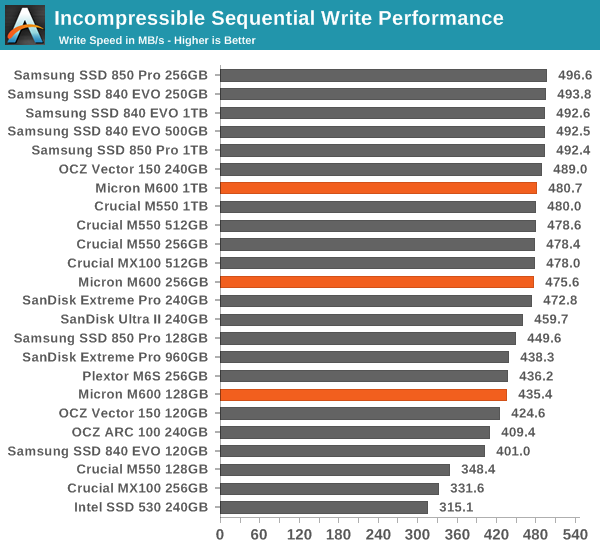










56 Comments
View All Comments
milli - Monday, September 29, 2014 - link
The MX100 already had terrible service time. The M600 is even worse.I mean if it's even worse than this showing the MX100 delivered (http://techreport.com/r.x/adata-sp610/db2-100-writ... then forget about it.
milli - Monday, September 29, 2014 - link
http://techreport.com/r.x/adata-sp610/db2-100-writ...Link got messed.
BedfordTim - Monday, September 29, 2014 - link
If service times are such an issue why did Tech Report give the MX100 an Editor's Choice award?milli - Monday, September 29, 2014 - link
Because everybody is a sucker for low prices.menting - Monday, September 29, 2014 - link
i guess you go out and buy the fastest, regardless of price then?milli - Monday, September 29, 2014 - link
Obviously not. I'm just giving one of the main reasons why the MX100 wins so many awards.Samus - Monday, September 29, 2014 - link
It's still a better drive than competing products in its price segment. The only other drive that comes close is the 840 Evo (which apparently has some huge performance bugs on static data - and support is terrible...the bug has existed for over a year.)You could consider spending more money on an Intel drive or something from Sandisk, but most consumers need something "reliable-enough" and price is always the driving factor in consumer purchases. If that weren't true, you wouldn't see so many Chevy Cobalt's and Acer PC's.
The irony is, for price and reliability, the best route is a used Intel SSD320 (or even an X25-M) off eBay for $60 bucks. They never fail and have a 15 year lifespan under typical consumer workloads. They're still SATA 3Gbps, but many people won't notice the difference if coming from a hard disk. Considering the write performance of many cheap SSD's anyway (such as the M500) the performance of a 4 year old Intel SSD might even still be superior.
Cellar Door - Monday, September 29, 2014 - link
My X-25M failed after 2 years of use. So please don't use the word 'never' - Intel sent me a 320 as a replacement, due to 3 year warranty. Performance wise, it's ancient but still an ssd.Samus - Monday, September 29, 2014 - link
Like many SSD's, they are prone to failure from overfapping.Lerianis - Friday, October 3, 2014 - link
Eh? Overwriting, I think you mean. That said, all of these drives should be able to handle 20GB's write per day at least for years without issues.